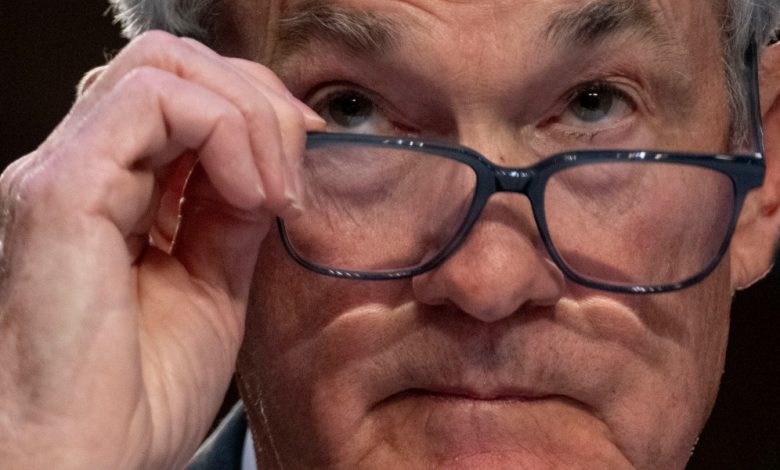Dow falls 574 points as Jerome Powell’s rate hike comments sting

Stocks fell on Tuesday after the Federal Reserve chief warned it could turn the dial on its rate hikes again if inflationary pressures remain high. The warning rocked markets and fueled concerns about a possible recession later.
The S&P 500 fell 1.5% on one of its worst days of the year so far. The Dow Jones Industrial Average lost 574 points, or 1.7%, while the Nasdaq Composite fell 1.2%.
Inflation and what the Fed is doing about it has been the focus of Wall Street’s wild swings this year. After what appeared to be a steady decline since last summer, inflation reports came out surprisingly hot last month. Likewise a number of other economic data.
This raised fears that inflation will remain stickier than feared and that the Fed will have to hike rates more than originally thought. Higher interest rates can pull down inflation by slowing the economy, but they hurt the prices of stocks and other investments. They also increase the risk of a subsequent recession.
Fed Chair Jerome Powell on Tuesday confirmed some of those fears, saying the latest data means that “final interest rate levels are likely to be higher than previously expected”. He also said in testimony before a Senate committee that the Fed stands ready to increase the pace of its rate hikes again if needed.
That would be a sharp reversal after just slowing its rate of increase to 0.25 percentage point last month from earlier hikes of 0.50 and 0.75 percentage point.
“If the body of data suggested that faster tightening was warranted, we would be willing to increase the pace of rate hikes,” Powell said. “Restoring price stability will likely require us to maintain a restrictive monetary policy stance for some time.”
After being basically flat just before Powell’s testimony, stocks fell immediately afterwards.
“This is the market that is returning to realistic expectations,” said Megan Horneman, chief investment officer at Verdence Capital Advisors. “I think it will continue to wash out some of the excesses in the market.”
Wall Street had already begun to convince itself that higher rates than previously thought were on the way and that the Fed might even return to bigger rate hikes after last month’s data reports.
Since receiving last month’s Blowout Jobs report and other surprisingly strong data, Wall Street has largely abandoned hopes that trickled earlier this year of a possible rate cut later in 2023. She also raised her forecast of how much the Fed will eventually hike rates before it pauses.
This was most evident in the bond market, where the 10-year Treasury yield exceeded 4% last week, hitting its highest level since November. It helps set interest rates on mortgages and other major loans.
On Tuesday, following Powell’s comments, it re-entered 4% before falling back to 3.97% from 3.96% late Monday.
The two-year Treasury yield, which is more in line with expectations for the Fed, shot up to 5.01% from 4.87%, the highest level since 2007.
Traders now see a better than two in three chance that the Fed will accelerate rate hikes and hike 0.50 percentage points on March 22nd. That’s a flip-flop from a day earlier when there was widespread talk that the Fed should stick with a smaller 0.25 point hike, according to data from the CME Group.
“If they went to 75 after pulling back to 25, that would scare the markets,” Horneman said. “I still think they’re going to go to 25, but if they go to 50, I think the Fed is very flexible and can act quickly if needed when the economic data tells them to.”
“If they articulate that, I think the markets can accept that.”
More fireworks could arrive later this week and into next week as the Fed gets more data points that will inform its decision making ahead of its next rates meeting.
The US government’s monthly jobs report is coming out on Friday. Most attention will be focused on how high wages are for workers. The Fed fears that excessive earnings could lead to more upward pressure on inflation.
Then two reports next week will provide information on how high inflation remains at both the consumer and wholesale levels.
The challenge for the market was that despite all the Fed rate hikes, the economy was actually too strong. While this resilience calms fears that a recession may be imminent, it likely means interest rates will need to stay elevated for longer. That, in turn, increases the risk of a deeper recession across the board.
The big shifts among investors about where inflation and the Fed are headed have led to violent moves in the markets. In January, equities rallied and bond yields fell on hopes that inflation would cool and prompt the Fed to ease interest rates. Then last month’s flurry of strong data dashed those expectations, sending stocks down and bond yields soaring.
All in all, the S&P 500 fell 62.05 points on Tuesday to 3,986.37. The Dow lost 574.98 to 32,856.46 and the Nasdaq fell 145.40 to 11,530.33.
An outlier was WW International, better known as WeightWatchers. It rose 79.1% after announcing it would enter the prescription weight-loss business with the purchase of telemedicine platform Sequence.
___
AP business writers Yuri Kageyama and Matt Ott contributed.
wealthThe CFO Daily Newsletter is the analysis every finance professional needs to read to get ahead. Sign up today.



